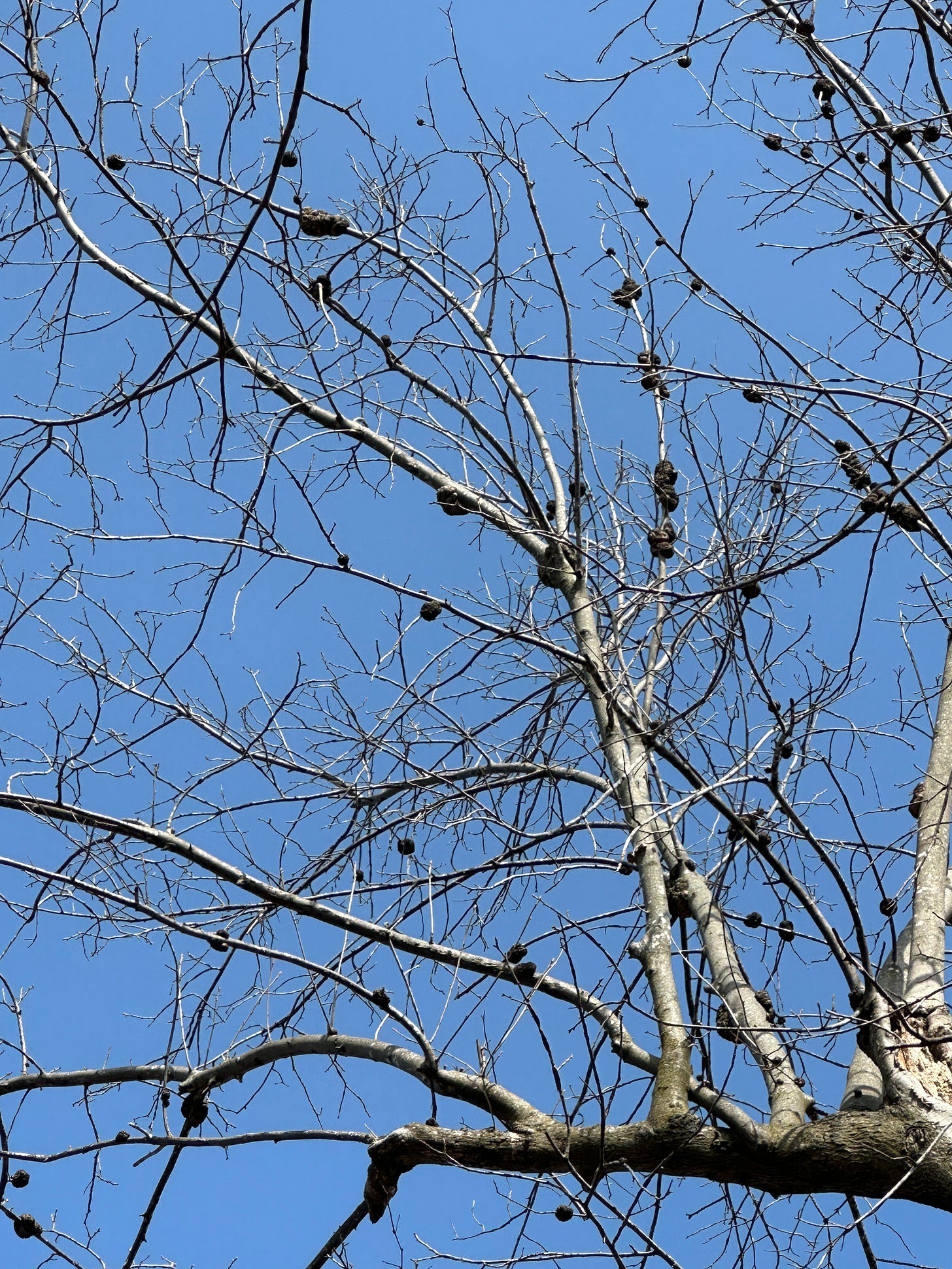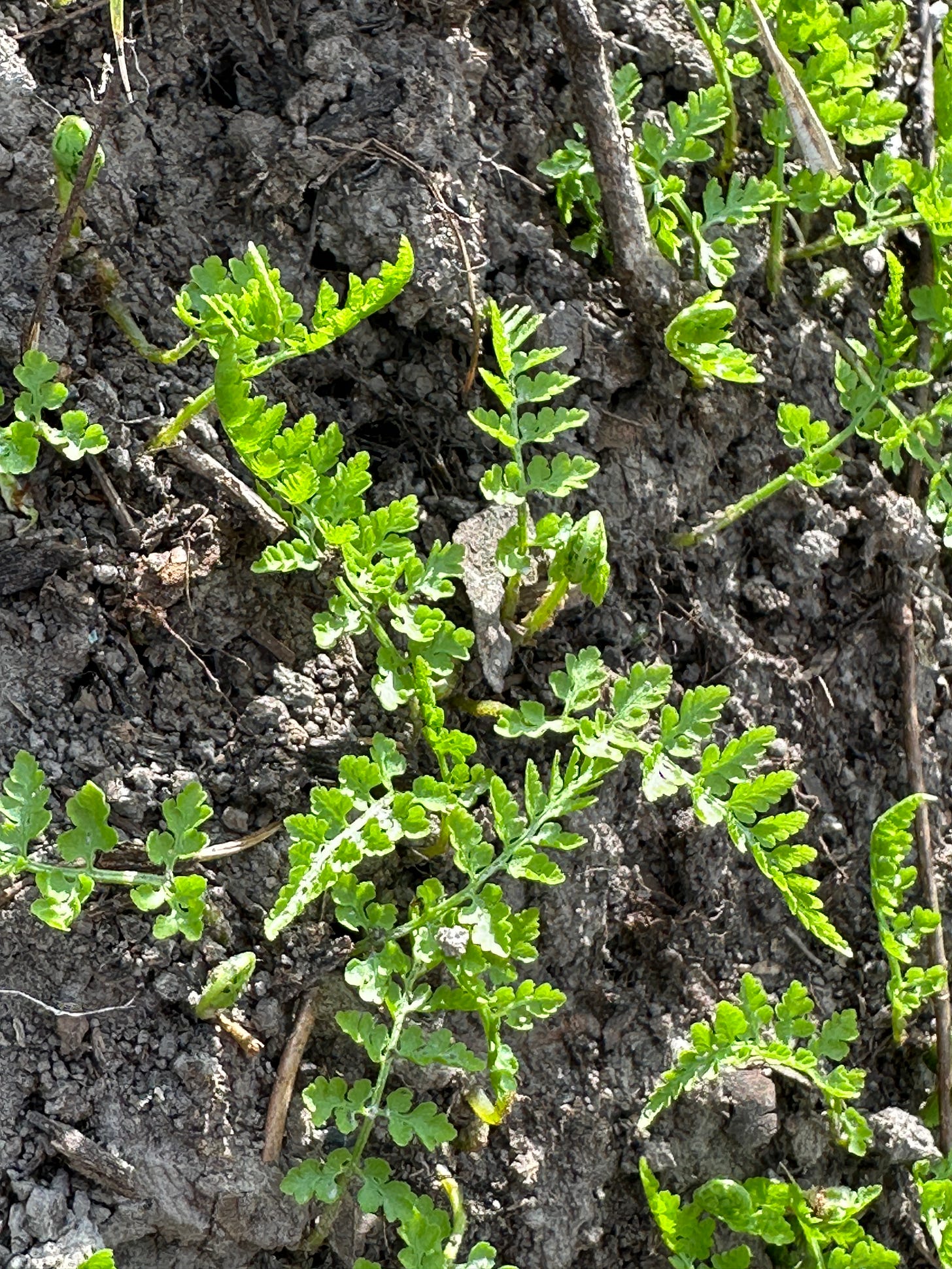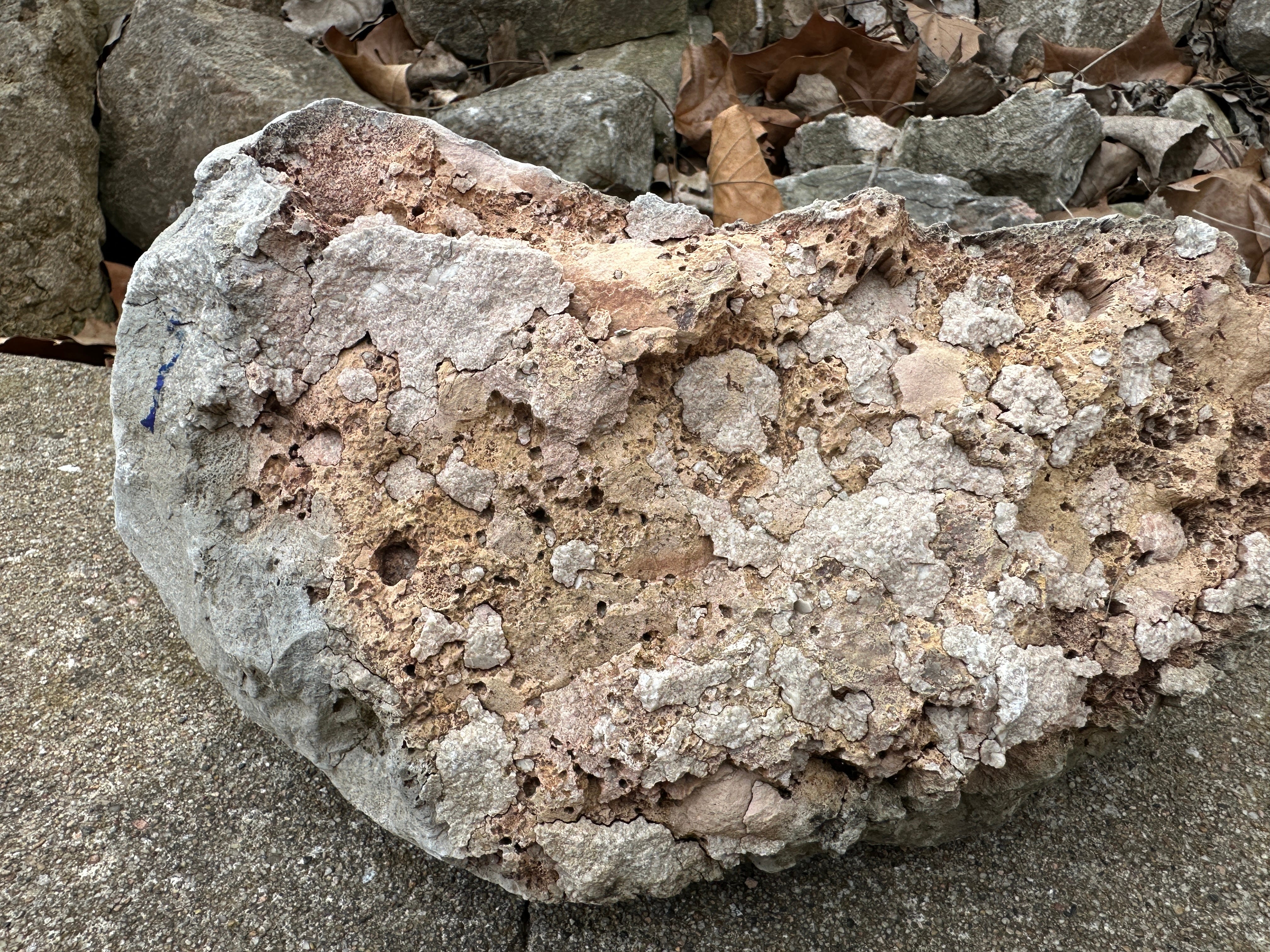This is all I’ve got: a few unremarkable images and some brief words about them. My recent field notes are scant thus far in early spring from the local wooded paths we can get to with a short walk.
It is still a mixed season here—a freeze two nights ago and 81 degrees today. But it has often been too windy to enjoy the walk unless it is at your back.
Soon we will take to the trails around Columbia to botanize in my first spring anywhere but the southern Appalachians. Already, spring beauties and bloodroot are up in the Lenoir Woods. Not many, but enough to remind me of these old friends.
I have yet to find the diversity equivalent of the banks of Nameless Creek in mid-April. But perhaps similar rich spots exist along the trails that we have only seen here in September after our arrival seven months ago. I will have to find the local experts willing to share those special places.

This view here is UP—to the top of a 45 foot hickory. I first identified these knotty growths on broken branches fallen on the woods path in our first Fall week here. But this shot marks the first time I saw phomopsis (fungal) galls attached to the host plant. Apparently they do no harm and can be found on oaks, hickories and other hardwoods.
Some of these are the size of softballs, rough-knobbed and hard. As a kid in the deep south, we had battles in our half-acre woods with any available projectile—mostly acorns and sweetgum balls. Maybe Missouri adolescents are badder than bama boys and do battle with this knobby organic ammunition that grow on trees. ¯\_(ツ)_/¯ Ouch!

A few weeks ago when I posted the essay about sapsuckers, I happened upon this cedar oozing a resinous sap. And yes, the birds do make some use of it, but nutritionally it is not as high in sugars as maples, birches or other forest trees. But might it be that sap attracts edible insects to the weeping wounds?
It is the resin of conifers like Baltic pine that produces amber. Could cedar sap do the same?

Something made me investigate these small distant patches of green down off the path that were growing on the soil of a rootball of an upended tree. And sure enough, the spores of a tiny fragile fern had landed by chance on the soil and germinated there, the upended rhizome tips now growing two-inch ferns. I knew this fern’s relatives in Virginia only from the uncommon limestone bluffs, while limestone dominates Boone County here.

This was just an unremarkable gray stone shoring up the bank along a nearby trail until I turned it over. Hundreds of tiny marine creatures are contained here in this unassuming stone, just where they were buried by sea sediments and compressed into this limestone conglomerate (breccia) some 300 million years ago. Even the rocks hold stories! I wish I could wrap my head around how long this place has been here, and how, in a geological instant, our species has singlehandedly managed to terraform the planet.
I have to remember that it is this week that begins the mass emergence of the summer regulars along Goose Creek. Several years we hosted the Wild Gardeners or other groups there for an interpretative nature walk around the loop in April. I go there now in my mind and can show you where to find more than a dozen of these old friends. Here are two of them: miterwort or bishop’s cap (get out your hand lens!) and cut-leaved toothwort.


I will post another half dozen of my photosynthetic friends from the field before the end of the month—which always passes far too quickly to take it all in; and is even harder when you are new to spring’s local display, transplanted as we are in new soil.
 – Fred First is an author, naturalist, photographer watching Nature under siege since the first Earth Day. Cautiously hopeful. Writing to think it through. Thanks for joining me.
– Fred First is an author, naturalist, photographer watching Nature under siege since the first Earth Day. Cautiously hopeful. Writing to think it through. Thanks for joining me.
